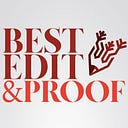How to Use ‘‘et al.’’ in the 7th Edition of the APA Manual
APA introduced the 7th edition of the APA Publication Manual in October 2019, which replaces the 6th edition of the manual published in 2009. Since then, several things have changed. Here are some notable changes:
· In-text citations are shortened.
· Publisher’s location is no longer included in the reference when you cite from a print book.
· DOIs are formatted the same as URLs.
· Up to 20 authors in the reference list format was updated.
· URLs are no longer preceded by “Retrieved from,” unless a retrieval date is needed.
The use of ‘‘et al.’’ is one of them. Different citation styles has different rules for when to use ‘’et al.’’. This article discussed the rule for APA style. This rule has changed from APA 6th edition guidelines on using “et al.,” which recommend listing all author names in the first citation up to five authors but then using “et al.” for the second and subsequent citations.
According to the 7th edition of the APA Manual, the in-intext citation for studies with three or more authors is now abbreviated right from the first citation. You only include the first author’s name and “et al.”
· (Lawrence, Wan, & Williams, 2018) (Incorrect)
· (Lawrence et al., 2018) (Correct)
Remember that there is no comma between the last name and ‘‘et al.,’’ but a comma should be placed before the date in parentheses citation. Also, the period goes only after the ‘‘al.’’ even when it falls in the middle of a sentence.
The Correct Use of ‘‘et al.’’ in the 7th Edition of the APA Manual
Authors make several mistakes when using “et al.” in academic writings. The “al” in “et al.” is always followed by a period because the period shows that it is the abbreviated form of the term ‘‘et alia.’’
The following forms of the abbreviation are not correct: ‘‘et al’’, ‘‘et. al’’, ‘‘et. al.’’ The proper use of the abbreviation is ‘‘et al.’’

It is Always Best to Avail Professional Support
Best Edit & Proof expert editors aim to provide your manuscripts with proper scholarly and academic tone and style. They will significantly improve the chances of having your research manuscript accepted for publishing. They provide subject-area proofreading and editing services in several fields categorized under various disciplines. With our extensive knowledge and expertise, we will help you find the right tone and style for your manuscript.
If you need our subject-area editors to format your manuscripts, giving you the fundamental rules for formatting your manuscripts as described in your guidelines, such as APA, MLA, or Chicago/Turabian styles, then contact us. At Best Edit & Proof, our proofreaders and editors edit every type of academic paper. We have a user-friendly website, and a simplified the ordering process.
If you would like our subject-area editors and language experts to work on your project for the improvement of its academic tone and style, then please visit the order page. It is easy! It takes only a few minutes to submit your paper and complete the process. Click here to see how it works.
We have flat-rate pricing based on our type of service (editing or proofreading), word count, and turnaround time. Enter your word count or copy and paste your document into our pricing calculator to get an instant quote.
If you need support for academic editing and proofreading, contact us. You can also e-mail us or use the 24/7 live chat module to get direct support. Our doctorally qualified editors will polish and fine-tune your projects.
